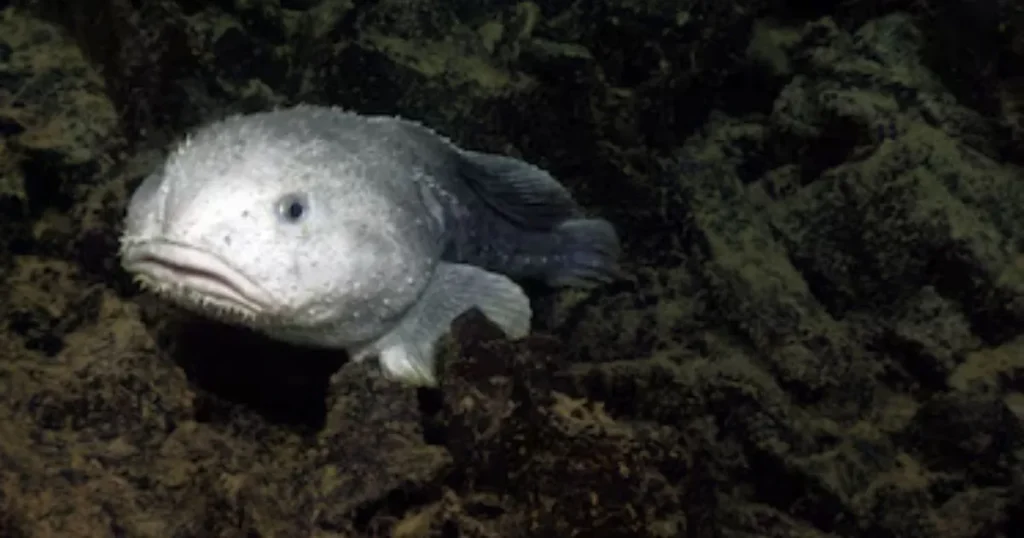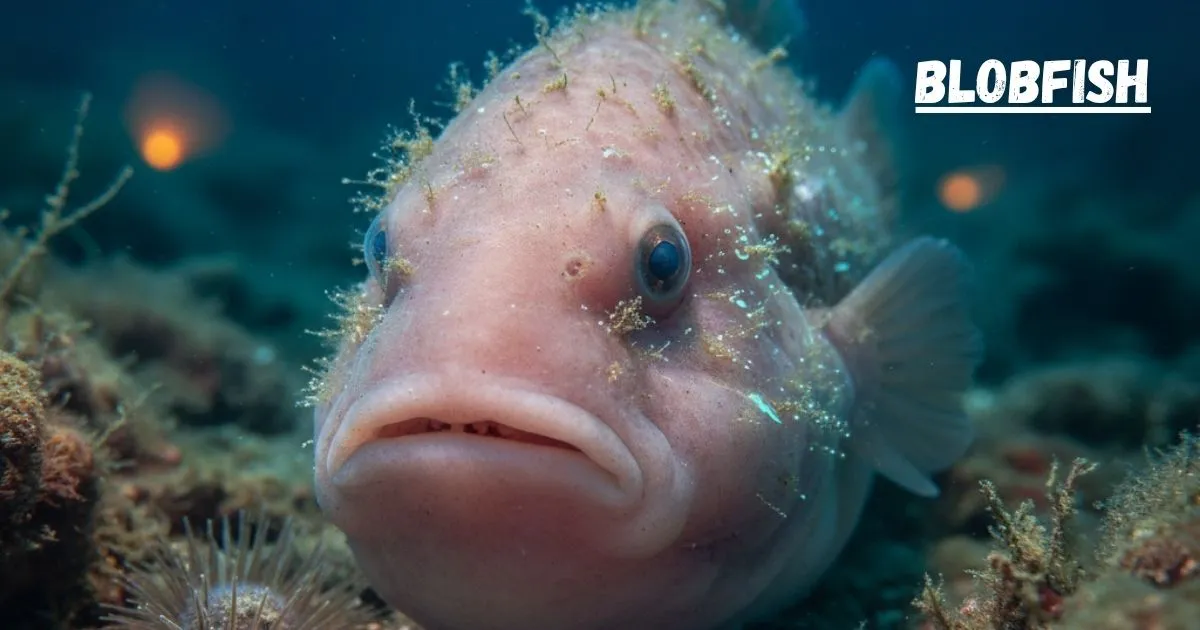Have you ever heard of the blobfish? It’s one of the ocean’s most unusual creatures and has become a bit of a celebrity in the animal kingdom. Known scientifically as Psychrolutes marcidus, this deep sea fish looks quite different from most fish you’ve seen. It’s famous for its odd, squishy appearance that almost looks like a sad, grumpy face. But don’t judge it too quickly, there’s something fascinating about this fish that goes beyond looks.
Blobfish live way down in the ocean, far deeper than the sunlight reaches. In these dark, chilly depths, life is tough, but the deep sea fish has figured out how to make it work. Now, let’s take a closer look at what makes this fuzzy fish so interesting and why it deserves our attention.
So, what exactly sets the blobfish apart from other sea creatures?
Blobfish are not your typical fish. Imagine a fish without scales, bones, or a swim bladder that’s a lazy fish! Instead, they have a soft, jelly like body, which helps them survive the crushing deep sea pressure. You might wonder, “How does the blobfish look underwater?” Well, at the extreme depths where it lives, the deep sea fish actually looks quite normal because the high pressure keeps its shape. But when it’s brought to the surface, it looks squished and floppy, kind of like a blob of jelly.
Its strange appearance has earned it the title of the world’s “ugliest animal,” but that’s not fair considering how well adapted it is to its environment. The blobfish’s unique body and relaxed lifestyle help it float just above the ocean floor without using energy to swim.
Home in the Ocean Depths
Have you ever wondered where deep sea fish live in the ocean? These amazing creatures prefer the deep sea homes off the coasts of Australia, Tasmania, and New Zealand. They hang out about 600 to 1,200 meters below the surface, that’s like stacking 2,000 feet of the tallest buildings on top of each other! At this depth, the pressure is so strong it would crush most fish, but the blobfish’s jelly like body handles it perfectly.
The deep ocean is a tough place to live. It’s really cold, and there’s almost no light. But the this fish is built to survive in these harsh conditions. Its body is just a bit less dense than water, which means it floats without needing to waste energy swimming. This slow moving lifestyle lets it wait patiently for dinner to drift by.
Read More: Comprehensive Blue Ring Angelfish Guide for Enthusiasts and Scientists
Blobfish Diet and Lifestyle

What do blobfish eat in the wild? The blobfish is a bit of a lazy foodie. Instead of actively hunting, it waits on the ocean floor for tasty treats to come close. Its diet mostly includes crustaceans like crabs and lobsters, as well as sea urchins, mollusks, and sea pens.
Because it doesn’t have strong muscles or a swim bladder to chase prey, the deep sea fish just lets the food come to it. This makes its life pretty easy compared to other sea creatures that need to be fast and agile.
Life Cycle and Family Life
Blobfish have an interesting family life, too. Female deep sea fish can lay up to 100,000 eggs at a time! That’s a huge underwater family waiting to hatch. After laying the eggs, the blobfish hover over them to keep them safe until they hatch.
As for lifespan, This fish can live for a long time, up to 30 years or more, in the deep ocean. They grow slowly, which helps them survive in an environment where food isn’t always easy to find.
Why Do People Love (and Fear) the Blobfish?
The blobfish’s most famous trait is its unusual appearance. Thanks to some funny photos and cartoons, people have called it the “world’s ugliest animal.” But there’s more to this fish than meets the eye.
People love the deep sea fish because it reminds us that nature is full of surprises. It also makes us think twice about beauty and survival. The blobfish looks odd to us because we see it out of its natural ocean home, where pressure keeps it looking normal. When you understand this, you realize how perfectly designed it is for the deep sea.
Blobfish’s Role in the Ocean Food Web

Just like every animal has a role in the food chain, This fish plays an important part in ocean life. Even though it’s not a top predator, it helps keep the deep sea floor clean by eating dead animals and small creatures. Blobfish are also prey for other, larger animals, making them part of the complex deep sea ecosystem.
Knowing the blobfish’s role helps us appreciate how every animal, no matter how strange, fits into nature’s grand puzzle.
Myth Busting Blobfish Misconceptions
There are many myths around the blobfish, so let’s clear up a few. First, it’s not actually a lazy fish it just has a different way of living that saves energy. Second, its “ugly” look is only when it’s out of water; at its normal depth, it looks much different.
Another myth is that deep sea fish are in danger. While they live in deep waters where humans don’t often reach, deep sea fishing can sometimes accidentally catch them. But right now, their population isn’t considered threatened.
How Can You Help Save the Blobfish and Its Habitat?

Even though the blobfish lives far from us, it faces threats from human activities like deep sea fishing and pollution. You might wonder how you, from your home, can help this odd fish.
Supporting ocean friendly products and spreading awareness about deep sea creatures like the lazy fish makes a difference. Every tiny action helps keep the oceans clean and safe for these amazing animals to live.
That’s the story of the blobfish, a fascinating deep sea fish that might not win any beauty contests but definitely wins in survival and uniqueness. Now that you know more, the next time someone calls it ugly, you can tell them why this fish is actually a deep sea superstar!
FAQs
Where do blobfish live in the ocean?
Blobfish live deep in the ocean, usually between 2,000 and 4,000 feet below the surface. They are found off the coasts of Australia, Tasmania, and New Zealand. This deep sea habitat is dark, cold, and has pressure 60 to 120 times greater than at sea level, which is perfect for the blobfish’s unique body.
What does a blobfish look like underwater?
At the great depths where they live, deep sea fish look quite normal because the high water pressure supports their soft, jelly like bodies. However, when brought to the surface, their bodies lose shape and look squished and flabby, which is why many call them the “world’s ugliest animal.
What do blobfish eat?
This fish mainly eat small crustaceans like crabs, lobsters, sea urchins, and mollusks. They don’t actively chase prey but instead suck up food that drifts close to them while they float just above the ocean floor.
How do blobfish survive the high pressure of the deep ocean?
Blobfish don’t have bones or a swim bladder, which would collapse under extreme pressure. Instead, their bodies are made of a jelly like substance with a density slightly less than water, allowing them to float above the sea floor without using much energy and withstand the intense pressure of their deep sea environment.
Are blobfish endangered or threatened?
Currently, blobfish are not considered endangered. They live in deep waters where human activity is limited, but deep sea fishing and pollution could pose risks. Protecting their habitat helps ensure they continue to thrive in their unique environment.
Conclusion
To conclude, the blobfish is far more than just the “world’s ugliest animal.” This deep sea wonder is perfectly adapted to survive in an extreme environment that few creatures can handle, with its gelatinous body designed to withstand crushing ocean pressure. Living quietly on the ocean floor off Australia, New Zealand, and Tasmania, the lazy fish plays a vital role in the deep sea ecosystem by cleaning up smaller creatures and being part of the wider food web.
